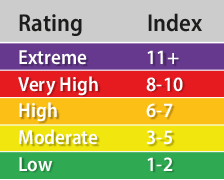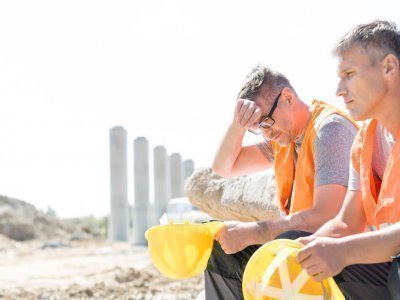Ultra Violet Radiation (UVR) + Skin Cancer at Work
In 2003 a skin cancer judgment found skin cancer was ‘serious’ and ‘dangerous’ enough for a retired truck driver to sue his employer of 35 years for damages, putting sun protection and potentially UVR protection more generally, on the agenda for employers.
About UVR
Excessive Ultra Violet Radiation (UVR) can cause skin cancer, skin ageing and eye damage, and may affect the immune system. Unprotected outdoor workers are most likely to accumulate excessive UV exposures during summer when, across most of Australia, during the hotter parts of the day, they can exceed UVR exposure limits in 5 to 10 minutes.
Over-exposure to industrial UVR sources, used for sterilisation in wastewater treatment or food manufacturing, curing of paints, inks and resins, welding, and other industrial activities, can also present a significant risk.
UVR Management
UVR exposure, like any other physical or chemical hazard, must be managed, starting with a risk assessment, to identify workers UVR exposures and the likelihood and consequence of exposure. This should then be followed by controls reducing UVR exposure as far as reasonably practicable, assigned in accordance with the hierarchy and built into organisational systems.
Protecting Outside Workers
Controls protecting outdoor workers from UVR (coming with the added benefit of reducing heat stress and fatigue caused by excessive radiant heat) include:
- Shading or scheduling work to limit the duration of work in the sun
- Providing PPE such as long pants, long sleeves rolled down, broad brimmed hats, tinted safety glasses and sunscreen to protect exposed skin
- Providing training on UVR hazards and controls e.g. the UV index and how frequently sun screen is required to be reapplied. NOTE SPF50 is the new minimum protection level recommended
- Communicating daily UV risk through apps, signage and pre start meetings
- Providing or promoting regular skin checks
- Identifying and controlling exposure to chemical agents that may act as UVR promoters (such as creosote), amplifying UVR skin burns and cancer risk
Protection from Industrial UVR Sources
Industrial sources may require specialist risk assessment. Controls include:
- Routine maintenance and inspection
- Engineering controls e.g. guarding, shielding or interlocks shutting down sources if opened or if hazardous zones are breached, ventilation to remove ozone
- Procedures controlling the use of and access to sources supported by instruction and training
- Adequate eye protection (normal tinted safety glasses are not generally adequate)
Further information
- Cancer Council - About SPF50+ sunscreen
- Safe Work Australia - GUIDE ON EXPOSURE TO SOLAR ULTRAVIOLET RADIATION (UVR)
- Use the free BOM weather app to check the weather forecast and UVR levels.
- Use the free SunSmart app for when you to use sun protection and to check UVR levels.
THE UV Index
- Forecast issued by BOM
- Identifies the risk for the day
- Protection required for levels 3 and above. The higher the index the greater the risk








